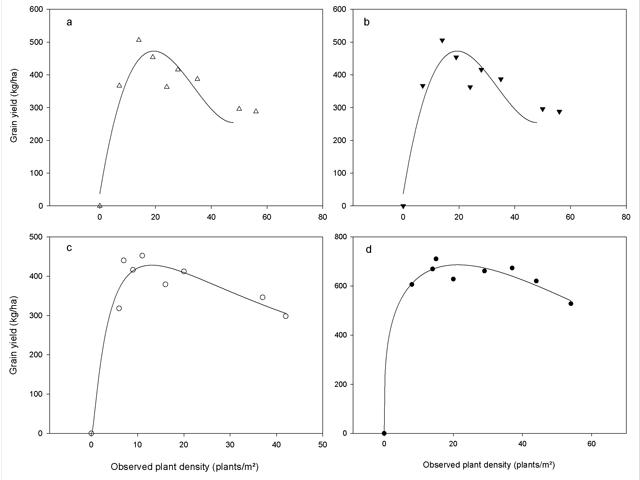Results
In the dry conditions there was approximately 40% plant death, with high density treatments being more affected.
- Conditions at Mullewa in 2013 after seeding were tough and crops were struggling with only 3mm falling in June.
- Rainfall finally arrived in the second week of July but Mullewa still received less than 50% of average rainfall in July.
Dry matter at 100% flowering on 1 August indicated that low density treatments had fared the best in the dry conditions and produced 2-3t/ha compared to less than 2t/ha for densities above 40 plants/m2 (targets above 60).
Aphids were also problematic in the northern agricultural region and in particular at Mullewa, where they attacked stressed plants.
- Consequently high density plots appeared to be colonised to a greater extent than lower density plots.
- Conditions improved by August and above average rainfall in September and October helped the canola recover and produce biomass in the range of 1-5t/ha and grain yields in the range of 300-700kg/ha.
Hybrids performed surprisingly well at Mullewa in 2013.
- Hyola 404RR was the highest yielding RR variety at 637kg/ha and Hyola 450TT the highest yielding TT variety.
- We might have expected the earliest flowering variety CB Telfer TT to have performed better than Hyola 450TT but perhaps the extended spring helped Hyola 450TT more than CB Telfer TT.
- Similarly the hybrid varieties produced the highest oil percentage.
- However the grain yields of Hyola 450TT were not high enough to cover the high seed costs, such that CB Telfer TT despite being lower yielding and producing lower oil produced similar low gross margins as Hyola 450TT.
- The RR hybrid’s grain yield was sufficiently high to cover its seed costs and it produced higher gross margins than the RR OP variety GT Viper which performed particularly poorly.


